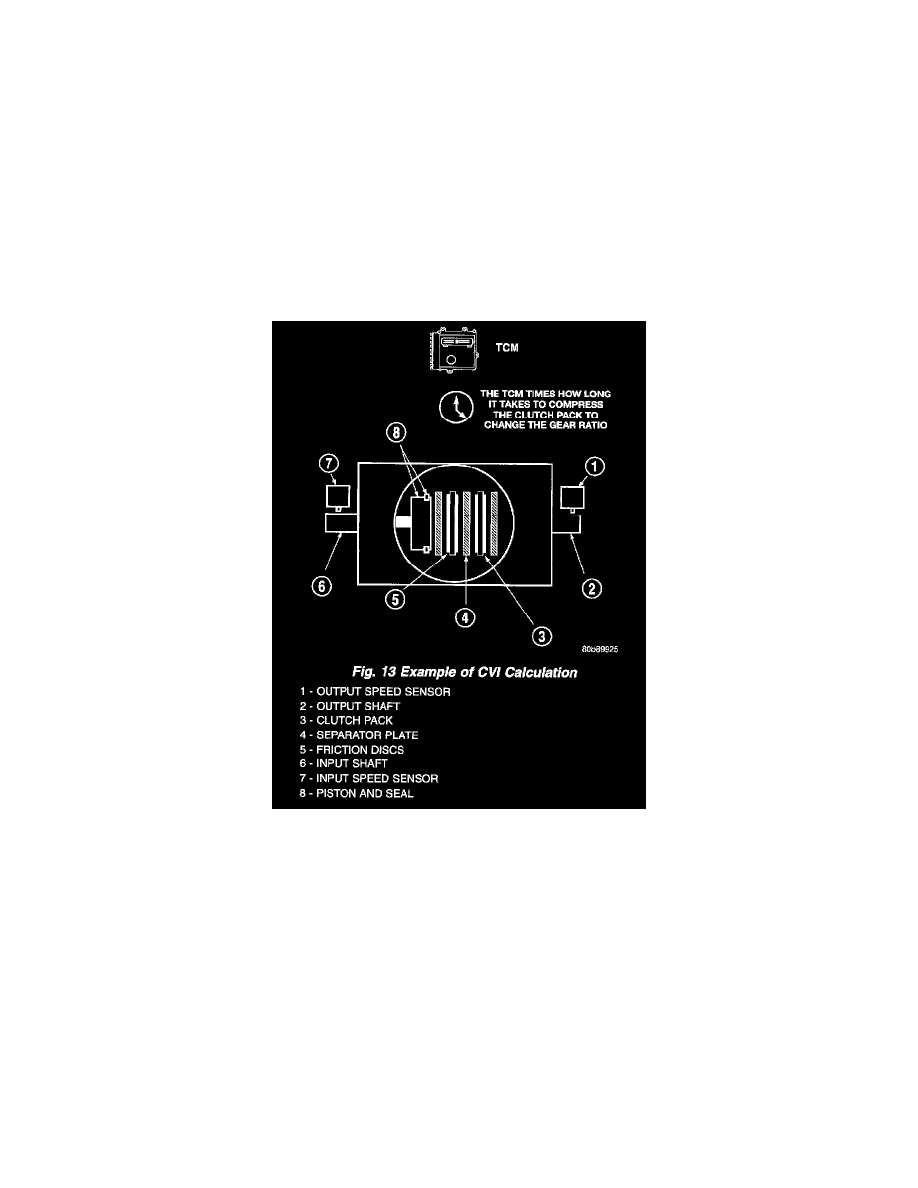Dakota Quad Cab 2WD V8-4.7L VIN N (2001)

-
System self-diagnostics
-
Diagnostic capabilities (with DRB scan tool)
NOTE: If the TCM has been replaced, the "Quick Learn Procedure" must be performed. (Refer to ELECTRONIC CONTROL MODULES/
TRANSMISSION CONTROL MODULE - STANDARD PROCEDURE)
Battery Feed
A fused, direct battery feed to the TCM is used for continuous power. This battery voltage is necessary to retain adaptive learn values in the TCM's
RAM (Random Access Memory). When the battery (B+) is disconnected, this memory is lost. When the battery (B+) is restored, this memory loss is
detected by the TCM and a Diagnostic Trouble Code (DTC) is set.
Clutch Volume Index (CVI)
An important function of the TCM is to monitor Clutch Volume Indexes (CVI). CVIs represent the volume of fluid needed to compress a clutch pack.
The TCM monitors gear ratio changes by monitoring the Input and Output Speed Sensors. The Input, or Turbine Speed Sensor sends an electrical
signal to the TCM that represents input shaft rpm. The Output Speed Sensor provides the TCM with output shaft speed information.
Fig.13 Example Of CVI Calculation
By comparing the two inputs, the TCM can determine transmission gear position. This is important to the CVI calculation because the TCM
determines CVIs by monitoring how long it takes for a gear change to occur (Fig. 13).
Gear ratios can be determined by using the DRB Scan Tool and reading the Input/Output Speed Sensor values in the "Monitors" display. Gear ratio
can be obtained by dividing the Input Speed Sensor value by the Output Speed Sensor value.
For example, if the input shaft is rotating at 1000 rpm and the output shaft is rotating at 500 rpm, then the TCM can determine that the gear ratio is
2:1. In direct drive (3rd gear), the gear ratio changes to 1:1. The gear ratio changes as clutches are applied and released. By monitoring the length of
time it takes for the gear ratio to change following a shift request, the TCM can determine the volume of fluid used to apply or release a friction
element.
The volume of transmission fluid needed to apply the friction elements are continuously updated for adaptive controls. As friction material wears, the
volume of fluid need to apply the element increases.
